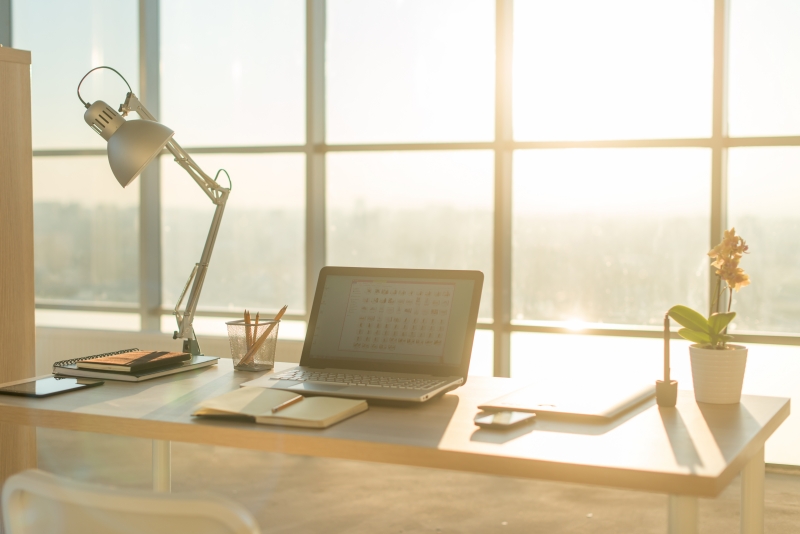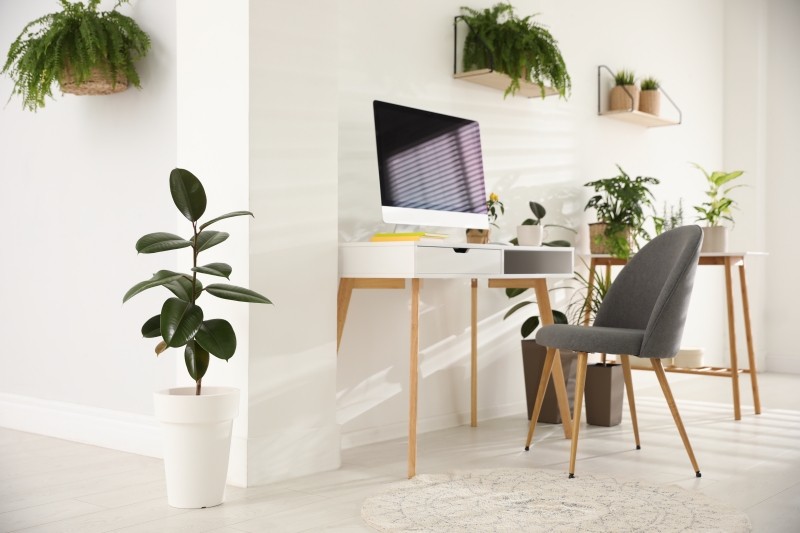This year has seen millions of employees around the world adapt to new ways of living as global lockdowns forced us to work from home. But for many of us, this was nothing new. A surge in remote working and the decline of the traditional office space was in full swing way before the events of 2020.
Modern technology allows remote work to flourish. Video calls and the multitude of online chat services available make communicating with a colleague via laptop just as easy as talking face-to-face in an office. Couple this with cloud sharing innovations and the great variety of organizational applications available, and there are very few obstacles that get in the way of remote working today.
One key issue remote workers face is managing productivity. For remote working to be in the interests of all, employees need to be as productive at home as they would be in their workplaces. This means there is a need for a home setup that allows work to be completed at its maximum potential. Carving out the ideal space for remote working at home is no quick task, but here is a short and concise guide to creating the optimum home office.
Where to Start: Designating a Space
Working from home is no longer just a once or twice a week thing. With potential future lockdowns and a general lack of need to be in the office anymore, we can go days on end working from home. This means that designating a specific space for work is essential.
A kitchen countertop or laptop tray aren’t sufficient workspaces in the long run. They might do the trick for an evening or even just one day, but they’re bad for you physically and don’t put you in the best possible environment to get things done.
You need somewhere that offers the same feeling of starting the working day that you would have if you were heading into an office. Somewhere you can spend long amounts of time, a place that allows you to draw a line between where you live and where you work. This is particularly important if you live with other people such as a partner, flatmates, or kids.
Ideally, your home office would be in its own dedicated room with a door to shut off distractions so that you can isolate yourself and focus. If this isn’t possible a spare room or bedroom can just as easily become a workspace with a desk, chair, and a few extra features.

The Importance of Illumination: Natural Lighting
Working in one place, completely confined to your own company can take its toll — even if you are at home where you are most comfortable and surrounded by loved ones. To be able to plow through work without mentally and physically exhausting yourself, you need to have a setup that is secluded but also energizes.
An isolated space can harm your mood, especially when it feels confined, which is why access to natural light is vitally important. Natural light has so many health benefits, from providing you with vitamin D to improving your sleep, alertness, and concentration — it’s a must for any home office. Even in bad weather, natural light makes you feel connected to the outside world.
Choose a space with a window, preferably one that can be opened to provide fresh air. If this isn’t possible, a window installation might be a shrewd investment. For those rooms with limited natural light, mirrors and shiny surfaces can work wonders by helping to bounce light around the room and effectively illuminate every corner so that the home office feels bright and alive.
Desk Diagnostics: Choosing the Right Chair and Desk Combination
The desk/chair combination is what really makes a space a home office. Comfort dictates productivity levels, and working from home sitting in the same spot for hours on end can be emotionally and physically draining. The importance of a good office desk and chair combination can not be overstated.
You want a sturdy desk that is high enough so that your eyes are level with your computer screen, as looking down forces you to crane your neck. If you’re not at optimum comfort while looking at your screen for every hour of the day, you’re not doing it right. Coffee tables and low-lying desks are immediate problems for working spaces if they’re being used daily. You’re going to be stopping regularly because your neck or back is aching. Not only does this hinder productivity, but it also puts strain on your back and posture.
For the same reason, a well-chosen ergonomic chair is essential — the right posture will boost your work rate and productivity by reducing aches, pains, and distractions. A chair that is proven to be ergonomically beneficial will make you feel good about taking on the day.
Customizing: Organization and Character
Once you have your well-illuminated space and a comfortable desk/chair combination, it’s time to kit your home office out with things that make it a nice environment to work in, and that make your working life as easy as possible.
This is largely down to the kind of space and desk you’re working with, but there are age-old office components that have stood the test of time for good reason. Cabinets, shelves, and paper trays can be used as you see fit and, dependent on your occupation, they work as a great solution to keeping your desk clear and tidy.
A stationary pot and paper tray might fit onto your desk to help you deal with immediate tasks, but shelves and cabinets should be used to store folders. This offers a storage solution that’s within arms reach and helps you to avoid cluttering your home office. With today’s technology, a wireless mouse and keyboard allow you to better position your body while also removing unsightly cables.
Pieces of art — in good measure — inject character into your home office. With carefully chosen colors they keep it minimalistic and give it life, while also supporting it as a place of work and concentration.
Giving Life to Your Office: Plants, Plants, and More Plants
Making your workspace somewhere uplifting and enjoyable is as important as making it organized and clutter-free. You want to stay focused but also upbeat. Photos and art will go some way to giving your home office character, but nothing injects color and life into a space like plants.
Plants and planters have a remarkable influence on office spaces in more ways than just brightening up dull environments. They reduce stress, purify the air, increase creativity, and help people to remain focused. Succulents, snake plants, and aloes are air-purifying plants that are nearly impossible to kill and don’t require loads of natural light. They can be placed anywhere in the office and don’t require regular maintenance, making your office a green, vibrant place of work without the extra chores.




